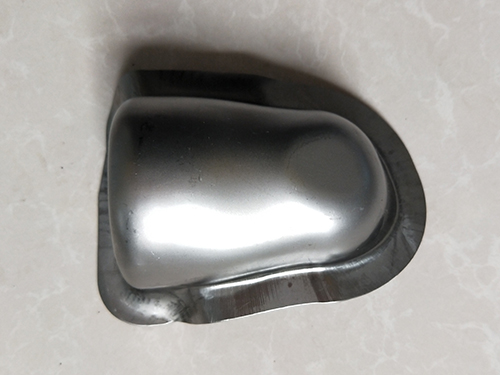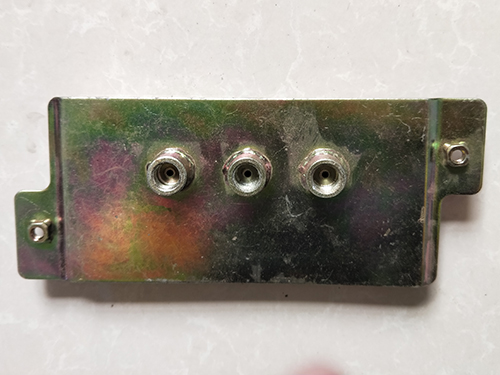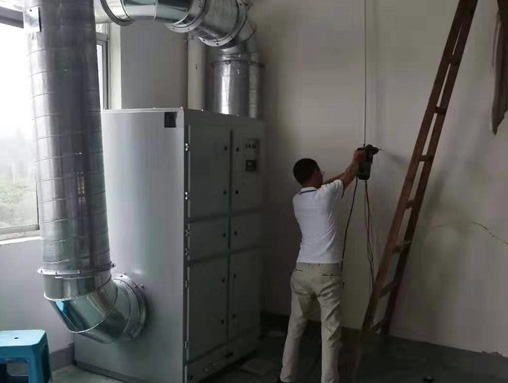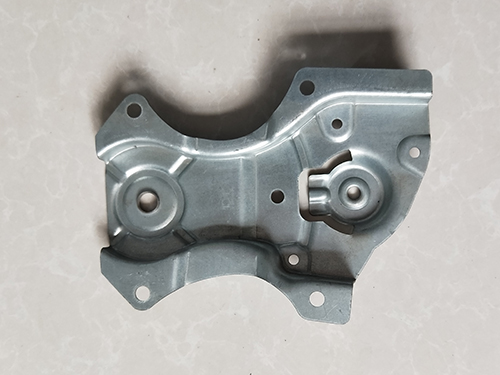Measures to improve the service life of cold stamping molds
Reasonable design structure of cold stamping molds, suitable mold material selection, and mold processing and assembly debugging process are the basis for improving the service life of cold stamping molds.
1. Optimize the structure of cold stamping molds
A reasonable mold design structure is a prerequisite for the service life of the mold.
(1) The service life of a mold is closely related to a reasonable structural design. At the beginning of the design, in addition to other design requirements, the toughness, rigidity, and strength of the mold are required to prevent deformation, damage, or increased wear of the convex, concave, and other structural components of the mold during the punching process.
(2) Mold design should adopt guided mold design as much as possible, while also considering mold design clearance. If the design clearance is too small or too large, it will increase the wear of convex and concave molds, leading to mold damage and reduced service life.
(3) Taking into account the fastening and positioning methods of the mold, strengthening the fastening degree and reasonable contact area of the mold components, and improving the overall manufacturing accuracy and quality of the mold, especially the design with reinforcing ribs, reinforcing plates, etc., will enhance the overall toughness, rigidity, and strength of the mold.
(4) Increase the length of the blade appropriately. Increase the length or thickness within the allowable range of the closing height of the punching equipment, the strength of the convex mold, and the material stored in the concave mold cavity, in order to increase the number of times the grinding machine grinds the convex and concave mold edges.
2. Reasonably design the clearance between the convex and concave dies of cold stamping molds
The size of the punching gap in the mold directly affects the quality of the stamped parts, the service life of the mold, and the magnitude of the punching force. Therefore, correctly mastering the design of the clearance between the convex and concave molds can double the service life of the mold.
(1) The gap value selected for mold design should be able to reduce the punching force and unloading force.
(2) The reference values in the design manual, and according to the specific situation, within the allowable range of product quality, the gap between the convex and concave molds should be appropriately enlarged, so that the wear degree of the convex and concave molds can be greatly reduced.
(3) Excessive clearance between convex and concave molds can lead to a reduction in the bright band of the finished product. It is important to control the clearance reasonably while ensuring the quality of the end face of the finished product.
3. Correct selection of mold materials
It is important to choose the right mold material in order to improve the service life of the mold. In practice, the material of the mold can be determined based on the batch size of the products being punched.
(1) When the batch production is large, the material used should be a mold material with good toughness, high rigidity, and high properties. If the batch production is small, general mold materials can be selected.
(2) The selection of mold materials is determined based on the material properties of the stamped material and the quality requirements of the stamped parts. When the dimensional tolerance of the stamped parts of the mold is high, the gap between the mold is small, and the friction between the convex and concave molds of the mold and the stamped parts is large, materials with high selectivity and sufficient toughness can be selected. At the same time, the different strengths and toughness of the punching materials, as well as the specific situation of the punching equipment, should also be considered.
4. Reasonable heat treatment process for cold stamping molds
To improve the service life of molds, it is a key and important step to carry out reasonable heat treatment processes for materials with different materials and properties.
(1) During the quenching process, if the heating temperature is too high, it will cause the convex and concave molds to become brittle and easily break and fracture. If the quenching hardness is too high or the quenching layer is too deep, it is also easy to deform and crack during cooling, or hidden cracks are difficult to detect, reducing the service life of the mold.
(2) During the quenching process, if the heating temperature is not sufficient, the hardness of the quenching process may not meet the technical requirements, and the convex and concave molds are prone to deformation under stress, which reduces the service life of the molds.
5. Cold stamping mold processing and assembly quality
In the process of mold processing and assembly, the machining accuracy and quality of the mold, different machining accuracy and quality, have a significant impact on the service life of the mold.
(1) Improve the technical level and worker skills of designers, strictly control quality, increase audit and inspection methods, and enhance the quality of mold manufacturing. Especially designers need to have a practical and intuitive understanding of production, while keeping up with the pace of the times.
(2) Standard mold frames are often used for molds. During the assembly process of self-made mold frames, the accuracy of guide columns and guide sleeves should be ensured, and the sliding clearance of guide columns and guide sleeves should be reasonable. Fully understand the inherent meaning of tolerance fit and geometric tolerance.
(3) When assembling convex and concave molds, the gap adjustment should be uniform, the smoothness of the convex and concave mold surfaces should meet the design requirements, and the parallelism and perpendicularity of each component should be ensured. Mold fitters must have operational skills, otherwise the quality of the mold cannot meet the design requirements.
6. Use and maintenance of cold stamping molds
In order to ensure the normal production of molds, improve the quality of stamped parts, reduce costs, and extend the service life of stamping dies, it is necessary to use and maintain molds correctly and reasonably. Its job responsibilities include the correct installation and debugging of molds; Insert the convex mold into the concave mold; Correcting bending, cold extrusion, forming and other processes; Adjustment of the bottom dead center of the upper mold; Also, pay attention to timely re grinding and polishing the cutting edge of the mold.
(1) When using molds, appropriate and high-precision stamping equipment should be selected correctly, as well as suitable punching force.
(2) Strengthen the management of trial molds, select experienced technical workers for trial molds, expose problems more fully, and reduce the number of trial molds.
(3) To reduce wear, apply suitable lubricants on the stamped sheet (parts), convex and concave molds to reduce the degree of mold wear and friction.
(4) Improve workers' skills, use stamping equipment and molds correctly, and timely regrind and polish the edges of molds.
(5) During the period when the mold is not in use, it should be properly sealed and protected. Long term unused molds should be coated with oil and rust prevention on the surfaces of convex and concave molds.







